Muscadine Jelly
Muscadine jelly is a unique, late summer treat using a grape variety native to the Southern United States – muscadines. Enjoy a jar of this sweet, jewel toned jelly today!
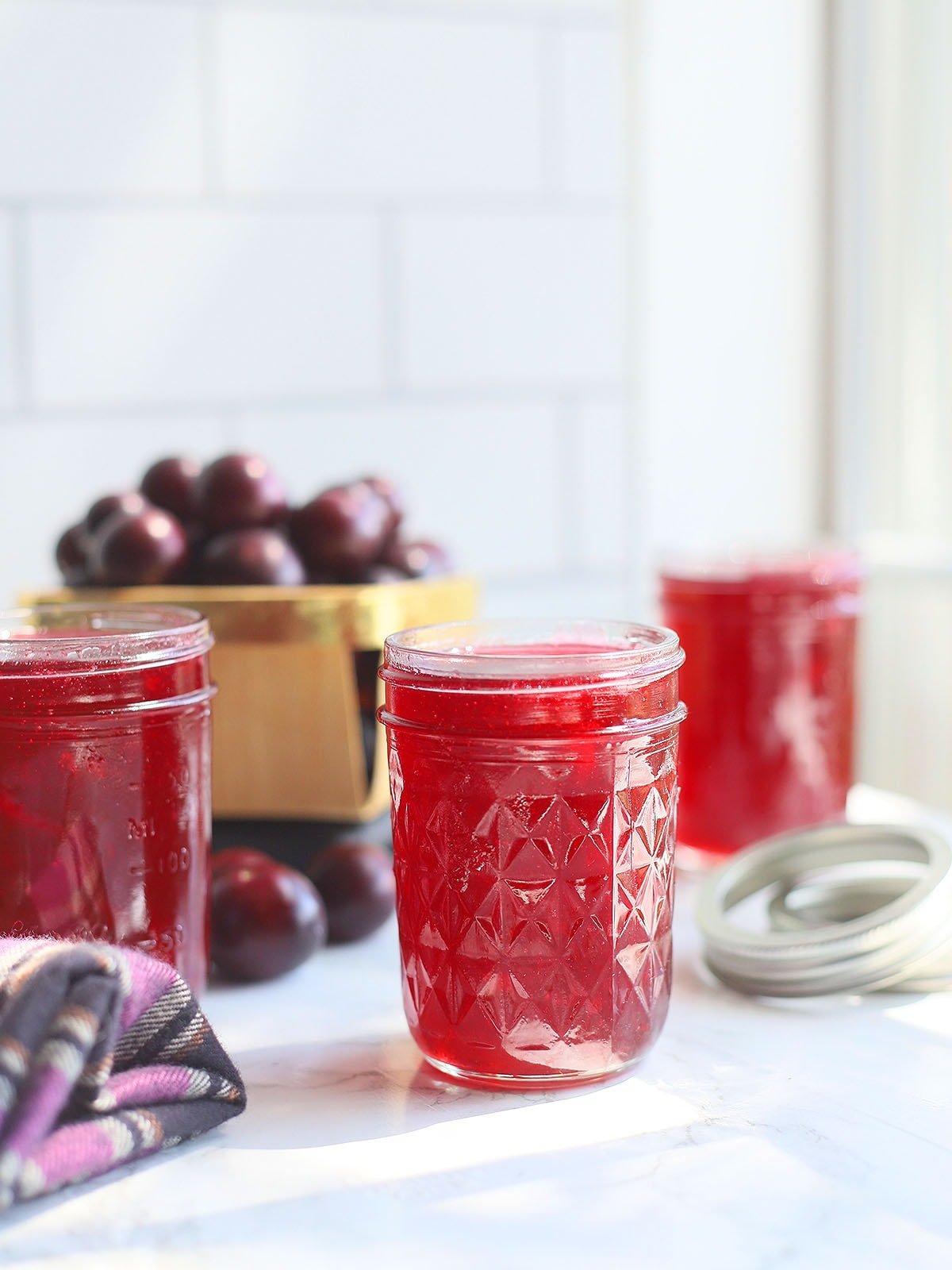
This post may contain affiliate links. Click here to learn more about how affiliate links are used on this site.
When you think about grapes grown in the United States, you probably think of California and the Pacific Northwest. However, here in the South, we have our own type of grapes —muscadines.
What are muscadines?
Muscadines are a species of seeded grape native to the United States. They thrive in hot, humid climates, which is why they are prolific in the Southern states and South-Central United States. You can sometimes find these wild grapes growing in wooded areas and it’s not uncommon for residents to have a vine growing right in their backyards.
Muscadines ripen in late summer; therefore, you’ll typically find them for sale in local farmers markets from August-September. If you’re lucky enough to pick your own, look for plump muscadines with bronze or dark purple skin. As with grapes, there are light and dark varieties. Scuppernongs are the lighter variety while muscadines are dark. Both differ from your standard table grapes in that they have a tough hull, soft center and super sweet musky flavor.
Muscadine grapes can be used to make wine. In fact, the first wine produced in the United States did not come from grapes grown in California. It was muscadine wine produced in Florida! It’s a sweet wine, comparable to a Riesling, though there are some dry varietals available. Because muscadine grapes have their own unique flavor and aroma, expect muscadine wine to taste unlike anything else you’ve ever tried. If you want to sample a bottle, I recommend Old South Winery in Natchez, Mississippi.
Ingredients and tools you’ll need
Once you’ve procured yourself some muscadines, all the other ingredients needed to make muscadine jelly are pretty simple to find. You’ll need:
- 5 pounds of muscadines, whole
- 8 cups of water
- 1 (1.75 ounce) box low sugar fruit pectin (or six tablespoons low-sugar bulk pectin)
- 6 cups white granulated sugar
- 2 large stock pots (or one large container to strain the muscadine grape juice into)
- Colander or mesh sieve
- Cheesecloth (if using a colander)
- Potato masher (optional, but handy for mashing grapes)
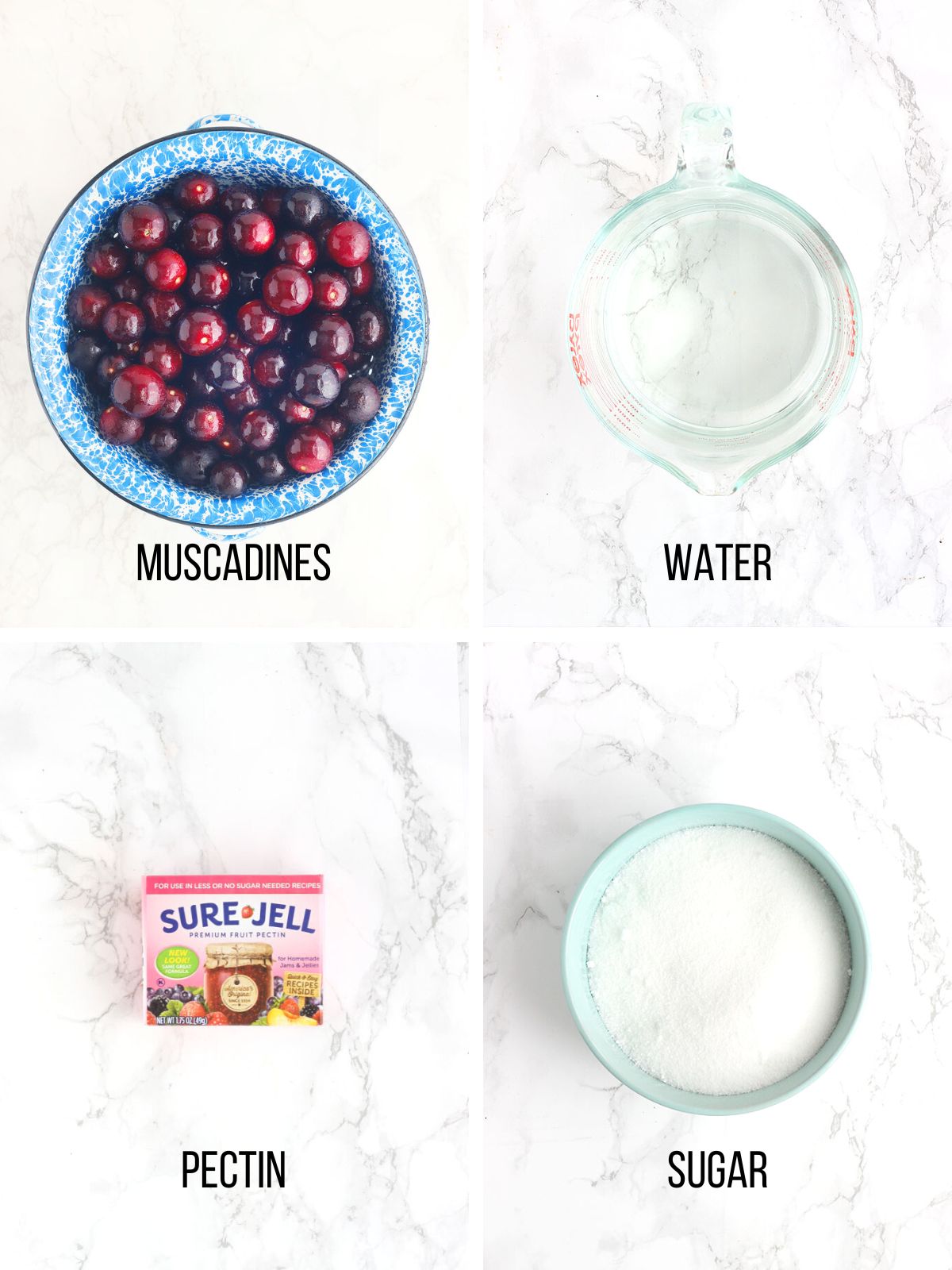
Extract the muscadine juice
Unlike jam or fruit preserves, jelly is made from juice only. The easiest way to extract muscadine juice is to cook them down until the thick skins start to soften.
- Start by rinsing the muscadines in a colander with cool water. Then dump them into a large pot.
- Add enough cool water to cover the grapes by at least one inch. I used 8 cups of water, but you may need more or less, depending on the size of your stock pot. Cover the pot and bring the water to a boil over medium high heat. Once the water starts to boil, reduce the heat to medium low and simmer for 20-25 minutes until the muscadines are soft and the skins are starting to peel away.
- Remove the pot from the heat and gently mash down the muscadines with the potato masher.
- Have a second stock pot or large container at the ready fitted with a fine mesh sieve or large colander lined with three layers of cheese cloth. Pour the cooked muscadines through the colander. Allow the muscadines to drain for about 30 minutes. If you want, gently press the muscadine skins with the potato masher or a wooden spoon to extract more of the juice.
- Afterwards, remove and discard the mashed fruit. Measure out the remaining juice. We will need 10 cups of juice for this recipe. If you end up with more than 10 cups, set the excess aside for a later use.


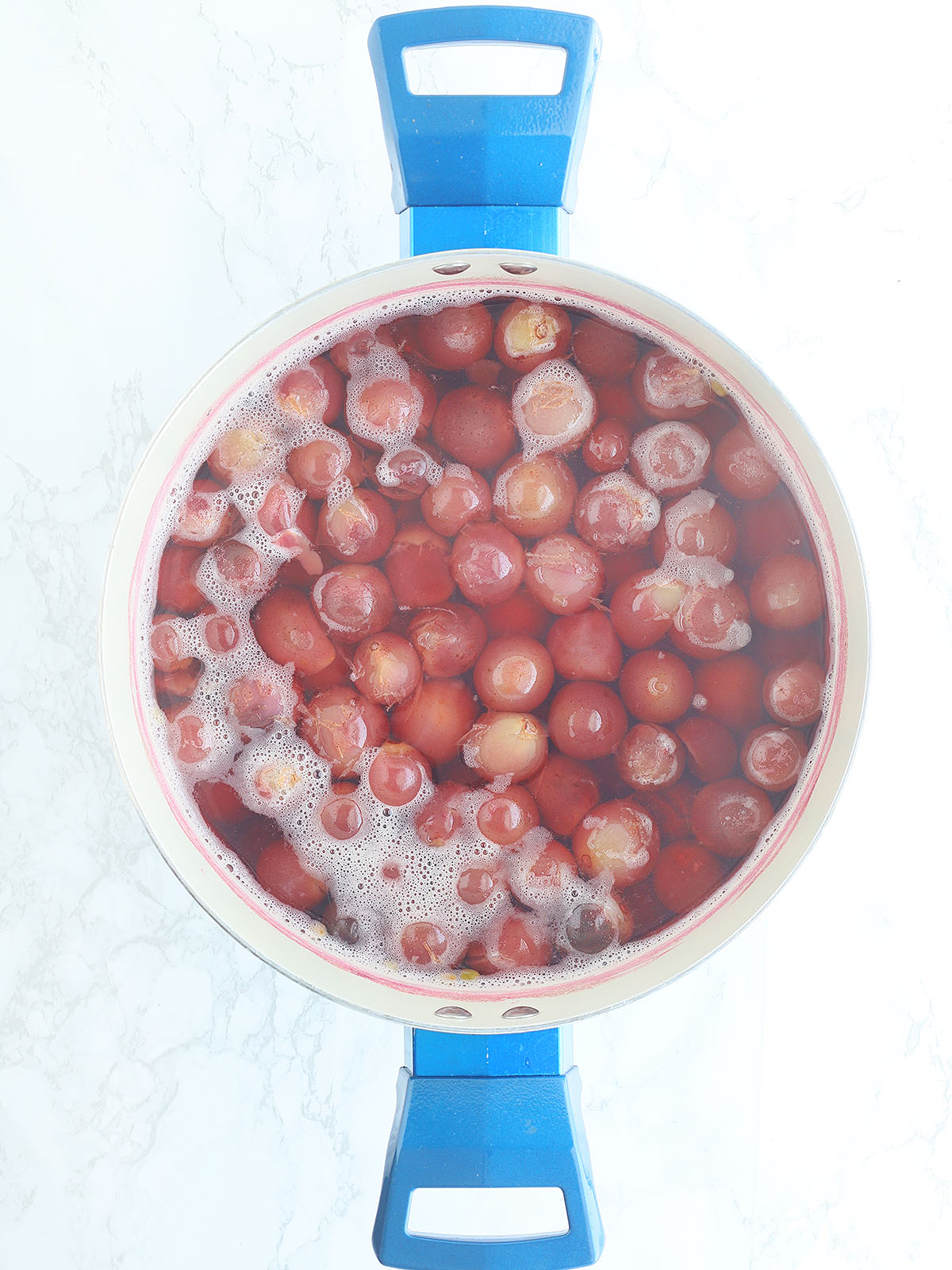
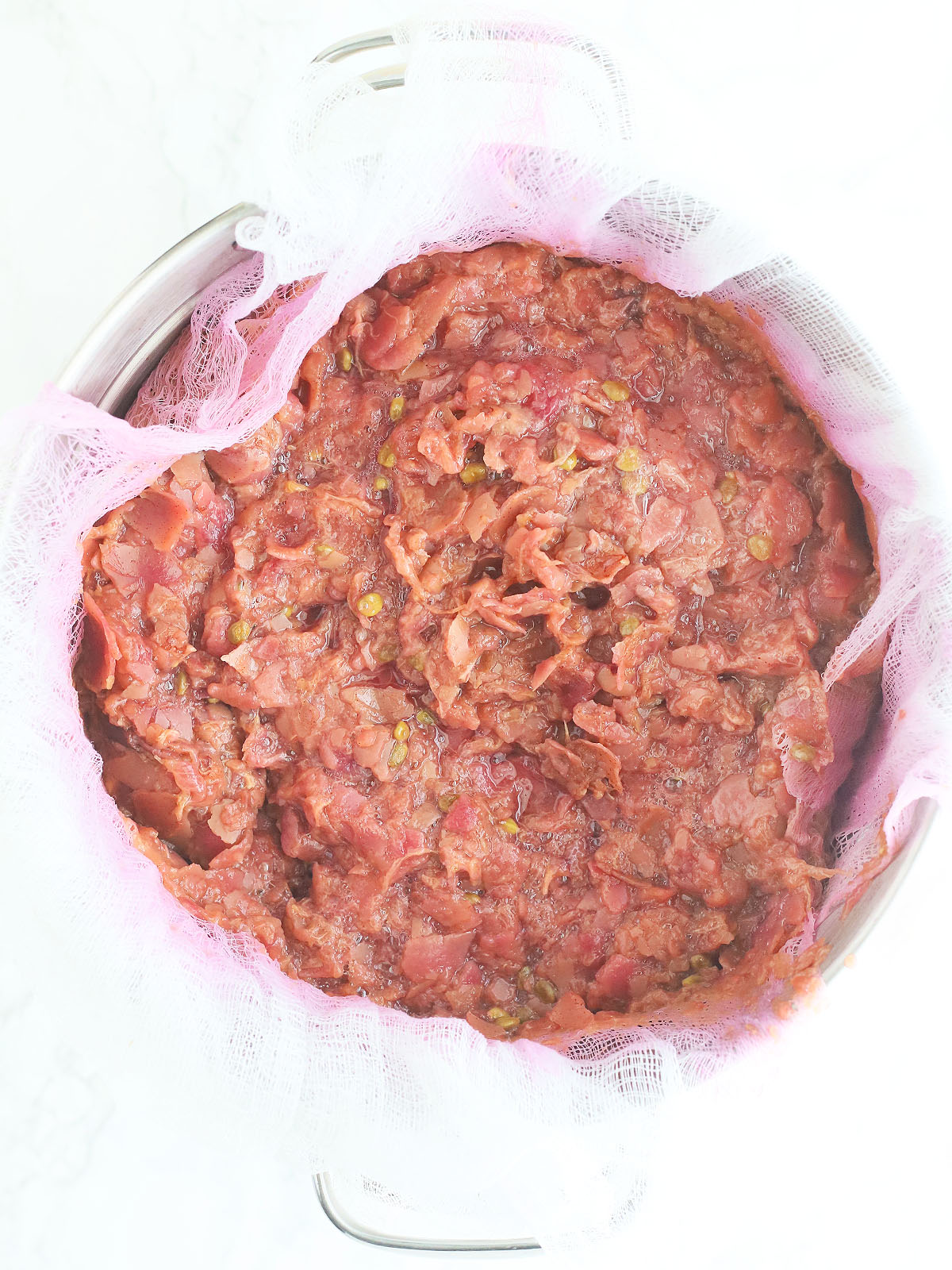

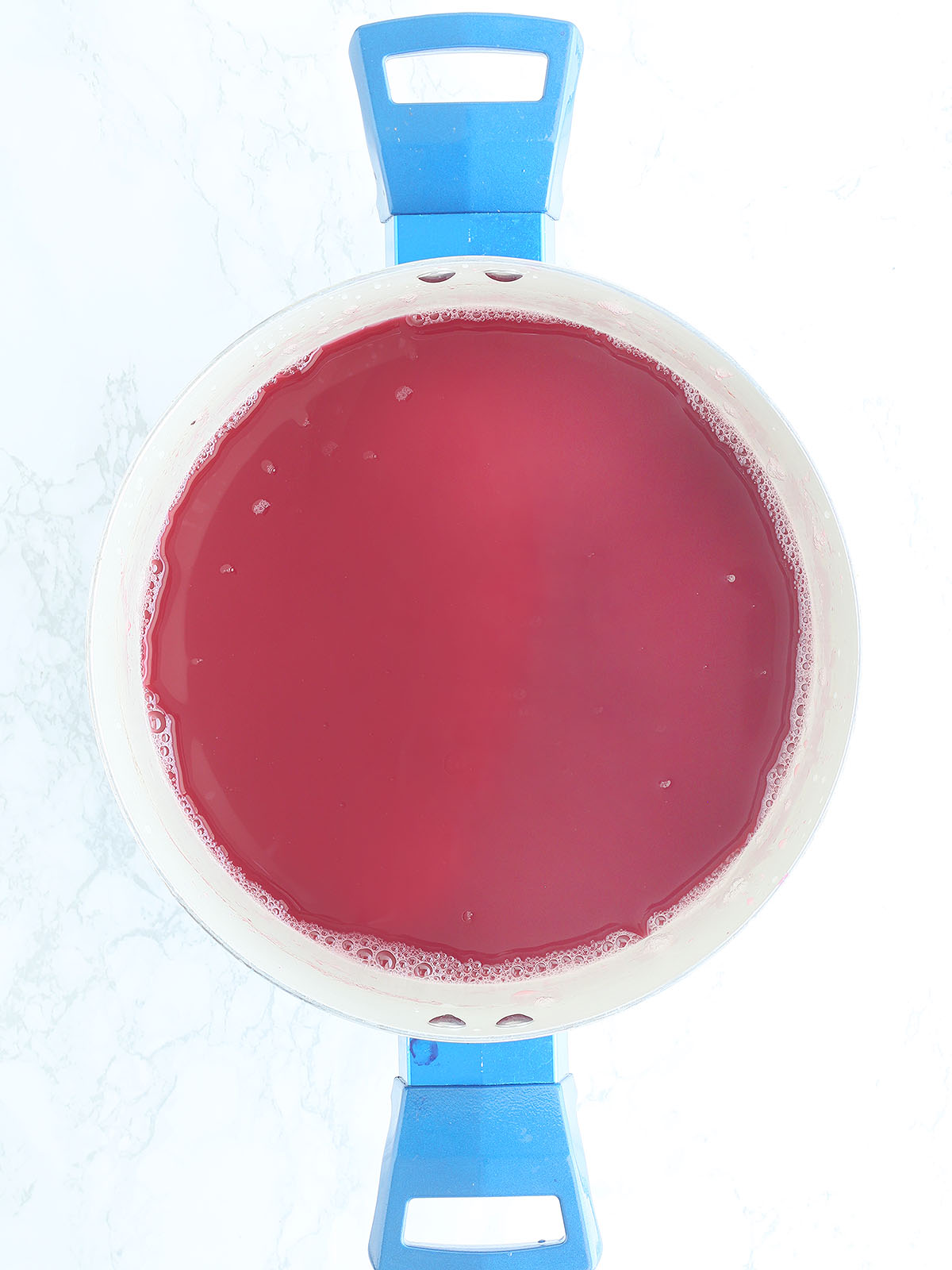
Make the muscadine jelly
- Combine the muscadine juice and pectin. Stir the pectin until it is completely dissolved.
- Bring the juice to a full rolling boil. Also called a hard boil, it means the liquid does not stop boiling when you stir it.
- Once that happens, add the sugar. Stir and continue boiling for one minute until the sugar dissolves. Skim off any foam that may have formed on the surface.
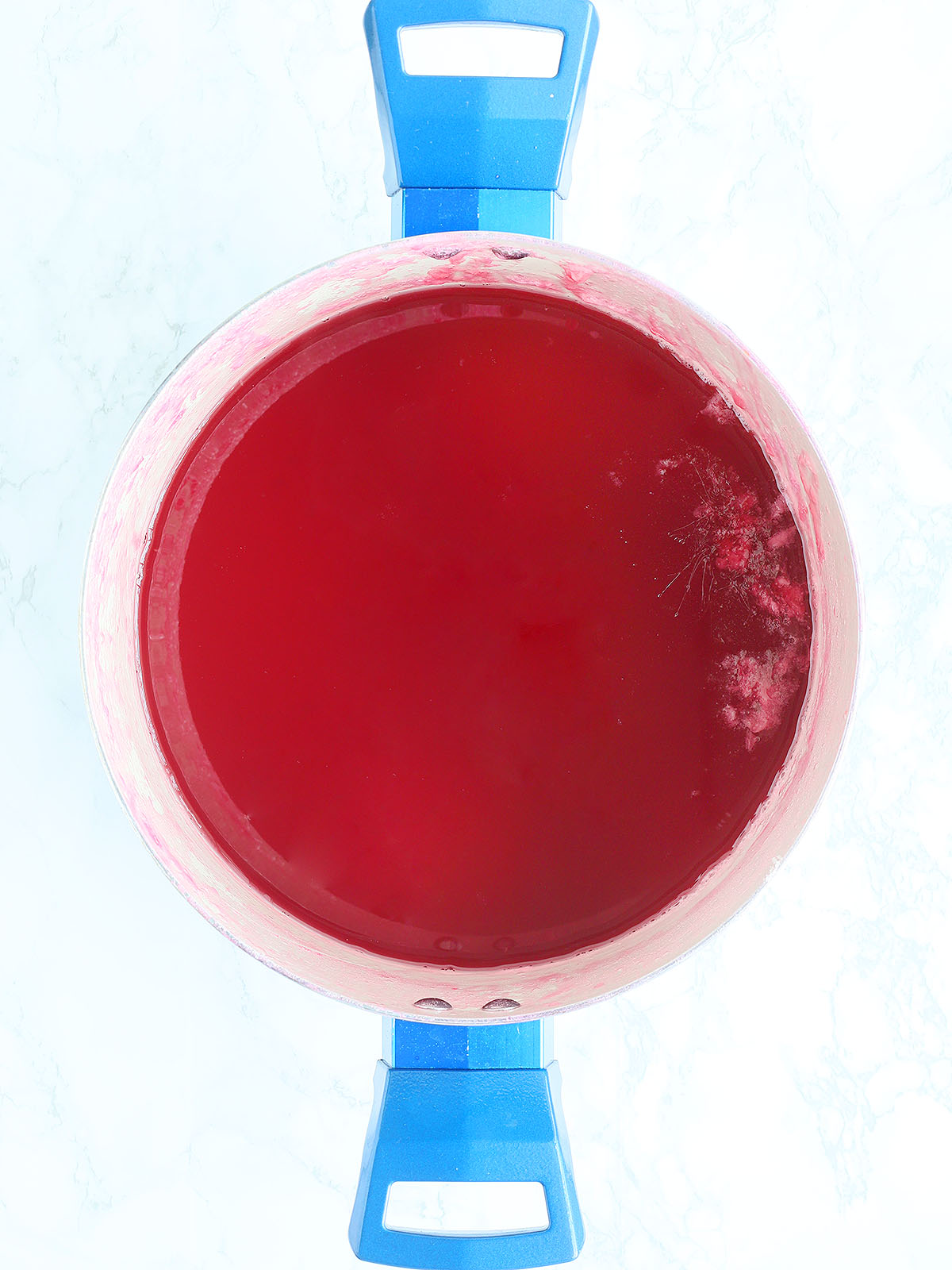
How to tell if the jelly has set
This is a little trick I’ve shared in all my other jam and jelly recipes. Jelly will continue to thicken as it cools, in fact it could take up to 48 hours to completely set, so it’s not always easy to tell if the homemade jelly has reached your desired consistency while it’s still hot.
Before starting, place a few metal spoons in the freezer to get super cold. After you’ve added the sugar and boiled for one minute, bring out one of the cold spoons and place a few drops of jelly on it. The jelly should start to gel almost immediately. If it doesn’t, keep boiling for an additional minute, testing in between, until it reaches your desired consistency.
Storage
Transfer the hot jelly to clean glass jars or containers. I prefer to use the smaller 8-ounce jelly jars. Pint jars will work as well. If you plan to can the jelly, leave ¼-inch of headspace between the rim of the jar and the surface of the jelly. Wipe the rims of the jars with a clean rag, top with a lid and secure with a ring.
Muscadine jelly will keep for up to one month in the refrigerator. You can also store the jelly for long term storage by processing it using the water bath canning method. Canned jelly can be safely stored in a cool, dry place for up to 18 months. For more information, check out my complete tutorial on water bath canning.
What to do if your jelly doesn’t set
First, give the jelly at least 48 hours. It can take that long to fully gel. If it’s still too runny for your liking, don’t despair. Measure out the jam, then pour it into a saucepan. Bring the jam to a boil, then for every four cups of jam stir in ¼ cup of white sugar and one tablespoon powdered pectin. If you have more than eight cups, you’ll need to work in batches. Cook for 5-10 minutes, stirring constantly. Test to see if it’s set using the frozen spoon method I describe above.
Frequently Asked Questions
Great question — and one that definitely stirs debate in the South! Short answer: All scuppernongs are muscadines, but not all muscadines are scuppernongs. Muscadine is the species and scuppernong is a variety of muscadine.
This recipe should yield approximately (4) half-pint jars (8 ounces).
Muscadine grapes should be stored in a closed container or freezer bag in the refrigerator and used within one week.
Yes! If the muscadines are stuck together in large frozen clump, I would let them thaw a bit first until you can break them apart, just to cut down on the time it takes to bring them to a boil. Other than that, you don’t need to thaw them before using.
I recommend adding additional water to make it 10 cups. You could also use fruit juice, such as grape juice, but it might slightly impact the flavor.
No, muscadines are a very sweet grape and this jelly is not tart.
Yes, but with some adjustments. Powdered pectin is added before cooking. Liquid pectin is added after. The measurements also differ: 1 tablespoon of liquid pectin = 2 teaspoons of powdered pectin. So for this recipe, use 9 tablespoons of liquid pectin to replace the 6 tablespoons of powdered.
The juice will last for a week to 10 days if stored in an airtight container in the refrigerator.
Yes. Freeze the juice in freezer safe containers, leaving an inch or two at the top for expansion. The juice can also be stored in freezer bags. Fill the bags about ⅔ full, seal and lay flat until frozen. Then the bags can be stacked to take up less room. The juice can be frozen for up to one year.
I have come across some muscadine jelly recipes that leave out the pectin and instruct you to boil the juice and sugar for longer. I have tried this method without success and ended up adding pectin anyway.
When using pectin, all of the sugar can be replaced with honey.
Stevia, Splenda and saccharin products can all be used as a substitute for sugar as long as you are using low sugar pectin. Aspartame is not recommended for canning because the high heat will turn the product bitter. Follow the instructions listed above for low sugar preserves. Since artificial sweeteners are sweeter than regular sugar, substitute two tablespoons of sweetener for every one cup of sugar. Please keep in mind that the jam may have a slightly different texture.
Sometimes placing a lid over hot liquid in a jar can create the appearance that the jar is sealed. It’s not. If you want to store the jars on a shelf long term, you must water bath can them first to not only kill any bacteria that can lead to food poisoning, but also to seal the jar and prevent bacteria from forming later.
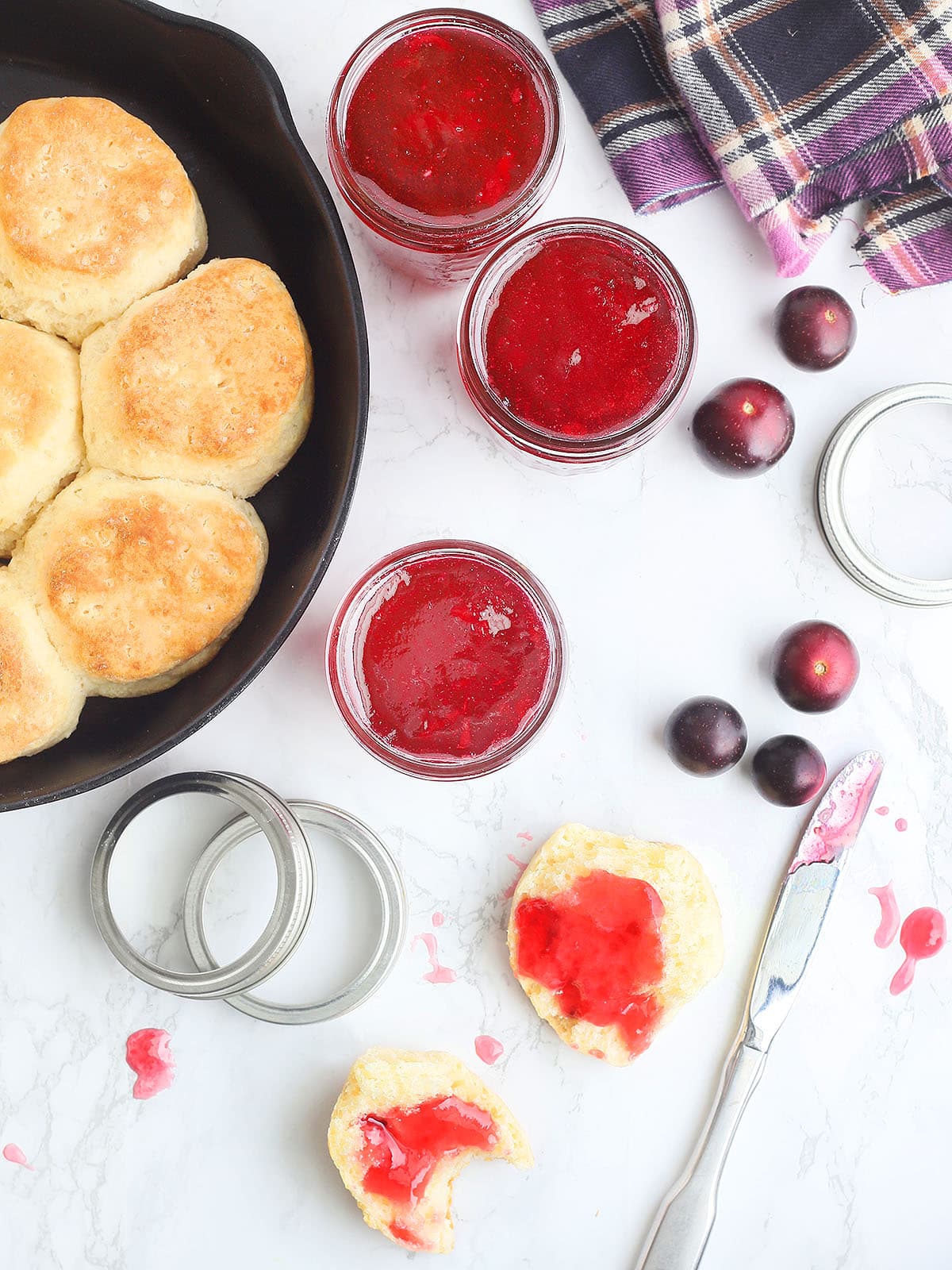
More homemade jam and jelly recipes

Muscadine Jelly
Ingredients
- 5 pounds whole muscadines
- 8 cups of water
- 1 (1.75 ounce) box low sugar pectin (or six tablespoons bulk pectin)
- 6 cups white granulated sugar
Instructions
- Rinse the muscadines in a colander under cold water.
- Transfer the muscadines to a large stock pot. Add enough water to the pot to cover the muscadines. You may need more or less than eight cups depending on the size of your pot.
- Bring the water to a boil over medium heat. Reduce the heat to a simmer and boil the muscadines for about 20-25 minutes until they are soft.
- Remove the muscadines from the heat. Mash the grapes with a potato masher.
- Place a mesh colander or sieve over a stockpot. If using a colander, line the colander with three layers of cheesecloth.
- Carefully pour the cooked muscadines into the cheesecloth. Allow the muscadines to strain for about 30 minutes, pushing on the grapes every few minutes with the potato masher or the back of a spoon to extract as much juice as possible. You should end up with about 10 cups of muscadine juice.
- Remove and discard the cheesecloth with the muscadine solids.
- Using the same stock pot, stir in the pectin until it dissolves. Bring the juice to a hard rolling boil.
- Add the sugar and stir to dissolve. Continue to boil the juice for one more minute.
- Remove the pot from the heat. Skim off any foam from the surface.
- Transfer the hot jelly into clean sterilized jars, leaving ¼ inch of headspace, and top with a lid.
- Muscadine jelly will keep for up to three months in the refrigerator. It can also be preserved using the water bath canning method. Once canned, the jelly will last for up to 18 months if stored in a cool, dry place.

